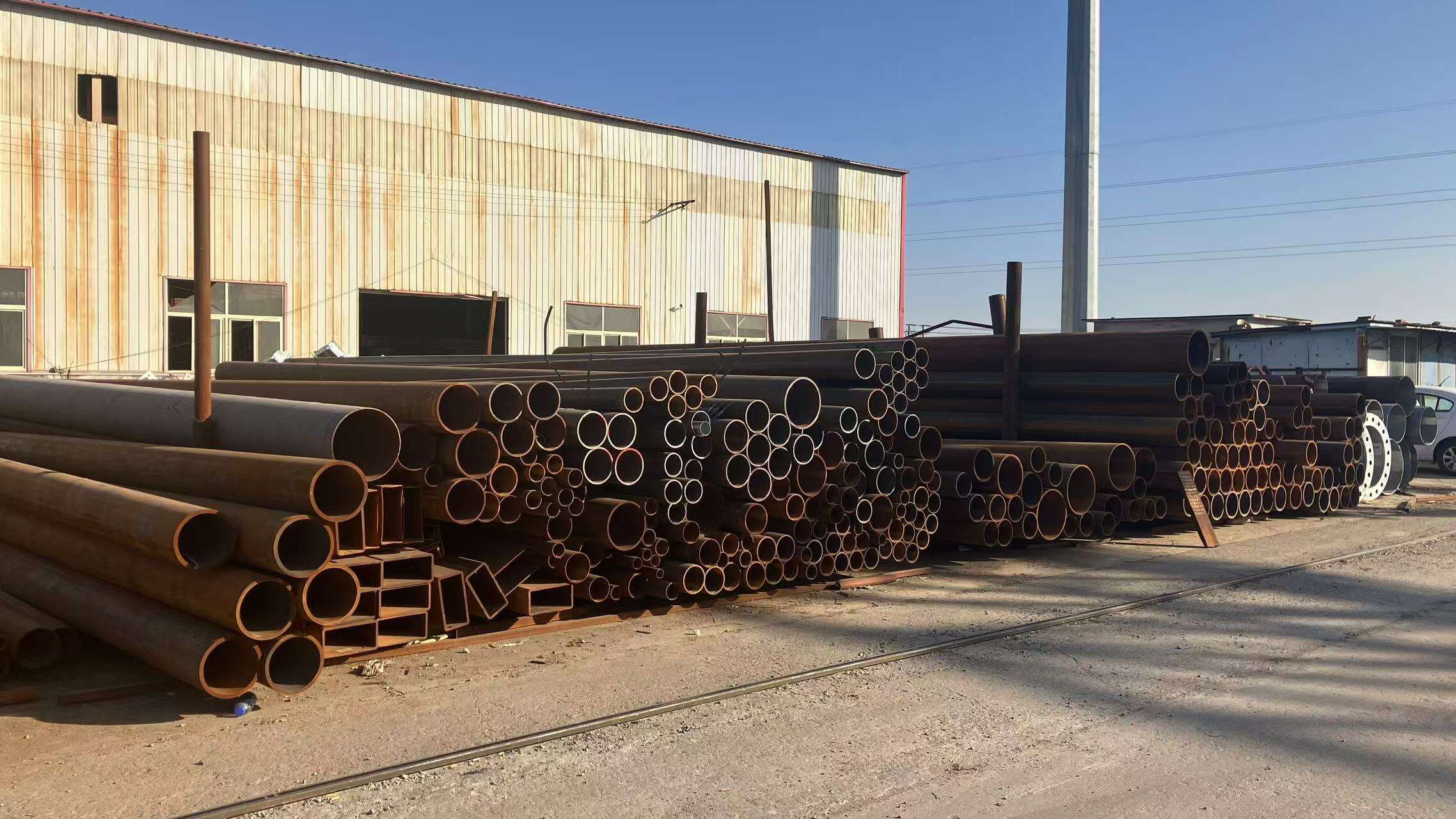introductio
Structurae ferreae mutaverunt quomodo experiaris architecturam. Eorum inaequalis robur permittit aedificia altiora et spatia aperta. Architecti ferre utuntur ad creandum consilia innovativa quae admirationem inspirant. Tu etiam ex eorum sustenabilitate beneficium capis, cum ferrum recyclari possit. Hae structurae durabilitatem et creativitatem coniungunt, mundum circa te formantes.
Evolutio Structurarum Ferrearum in Architectura
Primae Applicationes Ferri in Constructione
Ferrum primum in constructione saeculo XIX apparuit. Aedificatores id ad concretum corroborandum et ad creandum robustiores structuras usi sunt. Potestis eius primam influentiam in pontibus et stationibus ferriviariis videre. Haec structurae materias necessarias habebant quae onera gravia sustinere et ab usu resistere possent. Ferrum perfectum solutio praebuit. Eius robur ingeniariis permisit ut maiores et magis complexas aedificia designarent. Exempli gratia, Palatium Crystal in Londinio potentiam ferri in architectura ostendit. Haec structura iconica vitrum et ferrum coniunxit ad spatium exhibitionis ingens creandum. Probavit ferrum mutare quomodo aedificia designarentur et aedificarentur.
Revolutio Industrialis et Ascensus Ferri
Revolutio Industrialis punctum conversionis pro ferro notavit. Progressus in productione id magis idoneum et accessibile fecit. Ex hoc transitu profecisti cum urbes celeriter crescere coeperunt. Ferrum factum est basis evolutionis urbanae. Caelum alta, pontes, et officinae in eius inimitabili vi fidem habebant. Turris Eiffel, anno 1889 perfecta, versatilitatem ferri demonstravit. Stetit ut symbolum progressus et innovationis. Durante hoc aevo, structurae ferreae essentiales factae sunt pro moderna infrastructura. Sustentaverunt celerem expansionem industriarum et reticulorum transportationis.
Moderni Skyline a Ferro Formati
Hodie, ferrum delineat lineamenta caeli urbium maiorum. Potes videre eius effectum in aedificiis altissimis et consiliis innovativis. Architecti ferrum utuntur ad limites id quod possibile est extendendum. Eius robur permittit aedificia altiora cum interioribus apertis. Burj Khalifa in Dubai, altissimum aedificium in mundo, innititur ferro pro sua integritate structurae. Ferrum etiam sustinet praxim sustinendam in architectura moderna. Recyclabile et durabile, adiuvat ad minuendum impactum environmental. Dum urbes crescunt, structurae ferreae manent in fronte innovationis architectonicae.
Commoda Structurarum Ferrearum in Architectura Moderna
Incomparabilis Fortitudo et Durabilitas
Confidere in aedificiis ut contra tempus et naturam firmi maneant. Structurae ferreae incomparabilem robur praebent, quod eas idoneas facit pro architectura moderna. Ferrum gravibus onera, extrema tempestate, et etiam activitatem seismicam sustinet. Haec durabilitas efficit ut aedificia per decennia cum minimis sustentatione perdurent. Exempli gratia, structurae ferreae potest sustinere aedificia alta quae in caelum surgunt sine securitate compromittente. Eius alta tensilis vis permittit architectis consilia facere structurarum quae et robustae et leviores sunt. Ex hac combinatione beneficium habes quia securitatem praestat dum sumptus constructionis minuit.
Flexibilitas Design et Innovatio
Structurae ferreae architectis libertatem dant ad cogitandum extra limites. Hoc in unicis formis et consiliis aedificiorum modernorum vides. Ferrum flectitur et format in varias formas, permittens consilia creativa et innovativa. Planorum aperta, facies curvatae, et fenestrae amplae fieri possunt cum ferro. Exempli gratia, ferrum permittit amplas, columnas vacuas spatia in aeriportibus et stadium. Haec flexibilitas etiam aedificia mixti usus sustinet quae spatia residentialia, commercialia, et recreativa coniungunt. Haec consilia experiris ut spatia functionalia et visu pulchra quae vitam tuam cotidianam augent.
Sustentabilitas et Beneficia Environmental
Structurae ferreae ad futurum viridiorem conferunt. Ferrum est 100% recyclabile, quod vastitatem minuit et opes naturales conservat. Cum ferrum eligis, praxim constructionis sustinendae sustines. Productio moderna ferri etiam modos energiae-efficientes adhibet, diminuens eius vestigium carbonis. Praeterea, structurae ferreae saepe lineamenta energiae-servantia incorporant, ut tabulae solares et insulationem. Haec lineamenta consumptum energiae reducunt et vitam eco-amica promovent. Ferrum amplectendo, aedificia creas quae et innovativa et environmentaliter responsalia sunt.
Structurae Ferreae Iconicae et Eorum Impetus
Turris Eiffel: Symbolum Innovationis
Turris Eiffel una ex notissimis monumentis in mundo stat. Anno 1889 aedificata, demonstravit quomodo structurae ferreae constructionem revolutionare possent. Videbis quomodo eius consilium reticulatum vires cum elegantia coniungat. Tunc temporis multi dubitabant de possibilitate talis structurae altae. Tamen, turris probavit ferrum ambiciosas ideas architectonicas sustinere posse. Hodie, symbolum innovationis et ingenii praeclarum manet. Eius successus architectos ad novas possibilitates cum ferro explorandas inspiravit, futurum architecturae modernae formans.
Burj Khalifa: Caelum Turris Redefinens
Burj Khalifa in Dubai novas definitiones praebet quid skyscrapers assequi possint. Altus super 2,700 pedes, titulum tenet aedificii altissimi in mundo. Ferrum partes maximas in eius consilio agit, praebens robur necessarium ad sustinendas altas ventorum et visum seismicorum. Mirari potes eius elegans, futuristici aspectus, qui possibilitates modernae constructionis ferreae reflectit. Burj Khalifa demonstrat quomodo ferrum architectis permittat limites extendere, creando structuras quae et functionales et visu stupendae sunt. Normam ponit pro futuris skyscraperibus.
Pons Portus Sydney: Excellentia Ingeniaria
Pons Portus Sydney, anno 1932 perfectus, mirabile ingenii est. Eius ingens arcus ferreus plus quam 1,600 pedes extendit, faciens eum unum ex longissimis pontibus arcubus ferreis in mundo. Potestis eius durabilitatem et robur aestimare, quae sinunt eum gravem vehiculum quotidie sustinere. Pons etiam ut icon culturae fungitur, progressum et ingenium Australiae symbolizans. Constructio eius versatilitatem ferri in magnis infrastructurae propositis illustravit. Pons Portus Sydney continuat ut ingenieros et architectos in toto orbe inspirare.
Structurae Ferreae in Tendentiis Contemporaneis
Novatores Designationes Architecturae Innovativae
Vides structuras ferreas viam ducere in architecturae consiliis innovatoriis. Architecti ferream utuntur ad aedificia audacia et futuristica creanda quae landscapes urbanas redefinunt. Capacitas ferri flectendi, extendendi, et formas complexas sustinendi consilia permittit quae olim impossibilia erant. Exempli gratia, musea moderna et centra culturalia saepe intricatas structuras ferreas exhibent quae formam et functionem coniungunt. Haec consilia non solum oculum captivant sed etiam usum spatiorum augent. Robur ferri amplas spatia et interiores apertos sustinet, tibi spatia praebens quae amplum et invitans sentiunt. Dum urbes evolvuntur, ferrum architectos ad fines creativos propellere pergit.
Architectura Viridis et Pratica Sustentabilis
Structurae ferreae partes vitales in architectura viridi agunt. Ferrum est unum ex materiis maxime recyclabilibus, quod id sustinendum eligendum facit pro constructione. Cum ferrum eligis, ad minuendum vastum et conservandum opes conferes. Multa aedificia moderna ferrum in consilia energiae efficientis incorporant. Exempli gratia, structurae ferreae saepe tabulas solares et tecta viridia sustinent, quae adiuvant ad consumptum energiae minuendum. Praeterea, durabilitas ferri necessitatem frequentium reparationum minuit, impactionem environmental per tempus minuendo. Per ferrum in architectura viridi amplectendo, ad futurum sustinendum creandum adiuvatis.
Praefabricatio et Constructio Modularis
Praefabricatio et constructio modularis valde innituntur in structuris ferreis. Hae methodi implicant componenda aedificiorum in loco alieno congreganda et transportanda ad celerem institutionem. Praecisio et robur ferri idoneum faciunt ad hanc rationem. Beneficium habes ex celerioribus temporum aedificationis et costis reductis. Moduli ferrei praefabricati etiam constantem qualitatem praestant, cum sub condicionibus moderatis fabricentur. Haec methodus consilia innovativa sustinet dum efficientiam servat. Constructio modularis cum ferro praesertim popularis est in habitationibus, scholis, et facultatibus sanitatis. Tibi praebet spatia durabilia, adaptabilia quae necessitates modernas satisfaciunt.
Structurae ferreae architecturam modernam reformaverunt. Eorum effectum in consiliis fortioribus, flexibilioribus, et sustinabilibus videre potes. Exempla iconica ut Turris Eiffel et Burj Khalifa eorum munus in historia et innovatione illustrant. Dum architectura evolvitur, ferrum manere potes ut materia clavis quae creativitatem et constructionem eco-amica promovet.
faq
Quid facit ferrum electionem sustinabilem pro constructione?
Ferrum 100% recyclabile est. Id sine amissione qualitatis reutilizare potes, quod vastitatem minuit et opes conservat. Eius durabilitas etiam necessitatem frequentium substitutionum minuit.
Quomodo ferrum flexibilitatem consilii architectonici meliorat?
Ferrum in formas unicas flectitur et fingitur. Spatia aperta, facies curvatae, et consilia intricata creari possunt quae cum materiis traditionalibus impossibilia erant.
Cur ferrum pro aedificiis altis praeferatur?
Ferrum incomparabilem fortitudinem et proprietates levitatis offert. Structuras altiores cum materiis paucioribus aedificare potes dum securitatem et stabilitatem curas.



